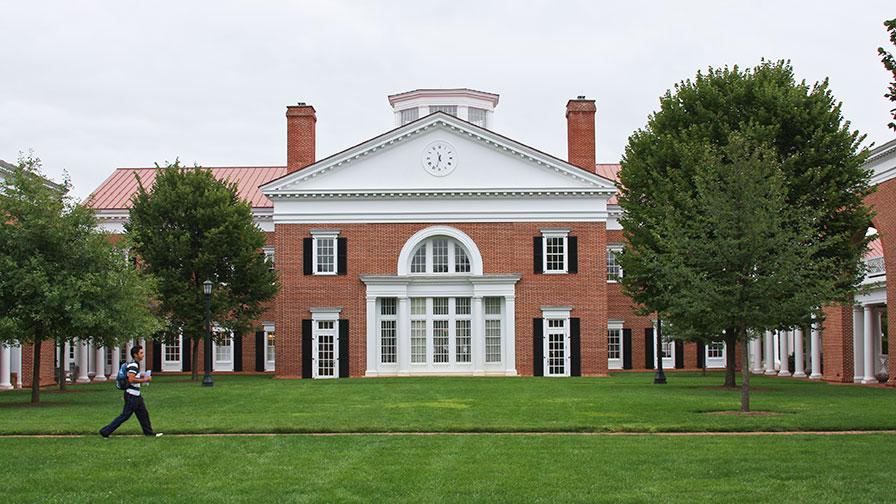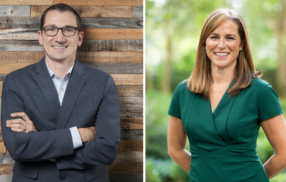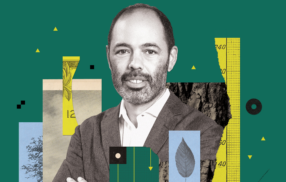
UVA Investing Conference at Darden Uncovers Opportunities in Low-Return World
By Jay Hodgkins
That no one can predict what the market is going to do a year or even a day from now was a common refrain at the eighth annual University of Virginia Investing Conference held at the Darden School of Business, but that didn’t stop an all-star list of investment professionals and executives from offering their best ideas about where the next big opportunities will emerge.
From macro trends like bullish economic data to beaten up sectors like energy that are primed for a comeback to individual companies emerging with a great business model or management team, speakers presented an optimistic tone despite the more pessimistic conference theme: Investing in a Low-Return World.
Will They or Won’t They?
The gorilla in the room, however, was uncertainty over the Federal Reserve Bank’s decision on when — and by how much — it would start raising the federal funds rate, the key rate determining other interest rates offered throughout the economy.
TIAA-CREF President and CEO Roger Ferguson Jr., a former vice chairman of the Board of Governors of the Federal Reserve System, helped address that question from the jump on 12 November, predicting that the Fed would indeed raise the rates by 25 basis points in December.
“The stars are aligned, but it will depend on the [economic] data and there is still more data to come in,” Ferguson said. “The cake is not baked yet, but cake is in the oven and it’s set to 350.”
More important, Ferguson said, is what approach the Fed takes after the initial raise. He said a 25-basis-point increase means little in real terms to the economy. However, the last time the Fed started raising rates, it started a streak of 14 consecutive 25-basis-point rate increases.
Interviewed by Darden Professor Frank Warnock, Ferguson said the Fed is indicating a slower, steadier increase this time around, but it’s difficult to predict what will happen once the increases start. So long as inflation is low, Ferguson said interest rate increases are prudent and good monetary policy.
In fact, despite the hand-wringing among investors over the negative impacts of rising rates, Ferguson said rising rates and low inflation has historically been a positive combination for equities. He expects rising rates to be a net positive for TIAA-CREF’s $835 billion of managed funds.
On the second day of the conference, Warnock interviewed William Poole, a senior fellow at the Cato Institute and former President and CEO of the Federal Reserve Bank of St. Louis. Poole reminded UVIC participants that despite all the attention paid to the Fed’s decision regarding the federal funds rate, the longer term interest rates will only rise with growth in GDP. For GDP growth to rise, Poole said, businesses will need to increase the dollars devoted to investment. In other words, the interest rates we observe in the economy are the result of the underlying fundamentals, such as investment and savings.
Investment opportunities
Several panelists and speakers at the conference took their turn at offering investing advice, from general strategies down to specific stocks they were buying.
Citi Investment Research Chief U.S. Equity Strategist Tobias Levkovich kicked off day two at the conference by describing a notable gap in perception versus reality in the stock market today — a gap that could mean opportunities for savvy investors.
Citi uses a collection of 20 sentiment indicators to determine if the market is in a “panic,” neutral or in “euphoria.” The indicators currently show that the market is in a mild state of panic, essentially bearish about the near-term prospects for equities.
On the other hand, a plethora of economic data suggests the U.S. is in no near-term danger of entering a recession and that there is reason to be optimistic about the economy and the stock market.
The perception versus reality gap informed Levkovich’s larger point that investors’ nature often gets in the way of data-informed reason, which he said makes going against the crowd a successful investing strategy.
The three members of the Fundamental Stock Panel — Charles de Vaulx of International Value Advisers, Billal Sikander of Monroe Hall Asset Management, Gregory McCrickard of T.Rowe Price and moderator Don Wilkinson III (MBA ’92) of Wilkinson O’Grady & Co. — agreed. They all classified themselves as “value investors,” and said the key to good value investing was finding the diamond in the rough — a company others fundamentally misunderstood, but is actually a great opportunity to buy low and ride up.
Second Curve Capital founder and CEO Tom Brown also saw reasons for optimism. Brown, whose hedge fund specializes in financial service sector investments, viewed rising interest rates as generally favorable for the financial sector and stressed the importance of patience when investing in the current environment. His stock selection strategy focused on smaller banks that generally receive less scrutiny from analysts and therefore offered a higher likelihood of trading away from their intrinsic value. All things considered, Brown saw no shortage of opportunities in his sphere of expertise.
Energy
While it is only a relatively small part of the economy, energy has had an outsized impact on the stock market, according to Levkovich, while the industry has been rocked by low oil and natural gas prices in the last year.
But Levkovich said the trend against energy stocks has gone too far, beyond the weak fundamentals, and he expects the sector’s stocks to bounce back. Kayne Anderson Capital Advisors Chief Investment Officer, President and CEO Robert Sinnott went even a step further.
“Eighteen months to two years from now, we think you will make a fortune in oil and gas and [master limited partnership] investing,” Sinnott said, emphasizing that patience would by key as the turnaround will take months to materialize and build momentum.
Hess Corp. John Hess certainly wouldn’t argue with Sinnott’s assessment. During a fireside chat-style interview led by Riverstone Holdings Partner Elizabeth Weymouth (MBA ’94), Hess explained his recent comment on CNBC that “nothing cures low prices like low prices” by explaining that low oil prices tend to drive supply and demand reactions that ensure the price will rise again.
“If you look at the last four oil price crashes, it takes about two years for the market to rebalance,” Hess said. “We’re in the first year of that rebalance, so it will probably be another year before prices start to go up again.”
Among the factors working in oil’s favor, Hess said investment in oil and natural gas exploration and production has already fallen below the point necessary to keep production at the current supply level, and it will go down even further next year.
The International Energy Agency expects non-OPEC oil production to fall 500,000 million barrels per day next year. On the demand side, lower oil prices are actually encouraging consumers to travel more and there is no sign of demand growth slowing down in emerging economies like China and India, where the wealth effect and increasing urbanization create consumers who use much more energy.
FinTech
Only a few years ago, Middlegame Ventures General Partner L. Michael Meyer (MBA ’92) said no one in the financial services industry was using the term financial technology, better known as FinTech. But, oh, how times have changed.
Meyer began investing in early-stage financial services companies that came to be the leading edge of FinTech because he saw a transformation coming to the industry. Today, that transformation is occurring at incredible speed as the sector is disrupted by new smart technologies and automation.
Route 66 Ventures General Partner Pascal Bouvier said that the sector has essentially transformed into an extension of the tech industry today, which is a monumental shift away from inefficient legacy banking and accounting infrastructure composed of countless proprietary systems.
The panel, which also featured Sandra Ro of CME Group, said cryptocurrencies like BitCoin are now the leading edge of FinTech. More important than any single cryptocurrency is the infrastructure that supports those currencies, the most prominent of which is called Blockchain.
With a system like Blockchain that can support completely frictionless transactions to move currency or ownership of assets around the world, instantaneously, the panelists painted a picture of a future where banking and all monetary transactions are carried out on a cell phone.
“Blockchain is enabling the Uber-ization of money,” Meyer said. “Imagine a world where seven billion people with a cell phone are ATMs. When everyone can be an ATM, there’s no more Western Union, no more ATMS, no more MoneyGrams. It’s quite exciting.”
Advice for students
No conference at the Darden School would be complete without some advice for students.
Hess urged Darden students to “find your passion and then give 150 percent. Don’t leave anything out on the field. If you do that, you will be happy.” However, he warned them not to lose sight of “their most valuable asset” — family — and to also give back to their community.
Sinnott offered advice that was only partially tongue-in-cheek. He said chasing the hot, popular job meant they’d be paid up to 35 percent less because of the demand for the positions, whereas less popular positions like petroleum engineer paid extremely well to attract the limited supply of necessary talent. He also advised students to want to be something, not be someone. They would only find happiness in their work by pursuing a field that truly interested them.
The University of Virginia Darden School of Business prepares responsible global leaders through unparalleled transformational learning experiences. Darden’s graduate degree programs (MBA, MSBA and Ph.D.) and Executive Education & Lifelong Learning programs offered by the Darden School Foundation set the stage for a lifetime of career advancement and impact. Darden’s top-ranked faculty, renowned for teaching excellence, inspires and shapes modern business leadership worldwide through research, thought leadership and business publishing. Darden has Grounds in Charlottesville, Virginia, and the Washington, D.C., area and a global community that includes 18,000 alumni in 90 countries. Darden was established in 1955 at the University of Virginia, a top public university founded by Thomas Jefferson in 1819 in Charlottesville, Virginia.
Press Contact
Molly Mitchell
Associate Director of Content Marketing and Social Media
Darden School of Business
University of Virginia
MitchellM@darden.virginia.edu





